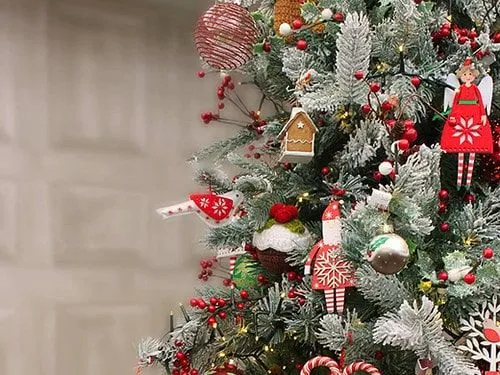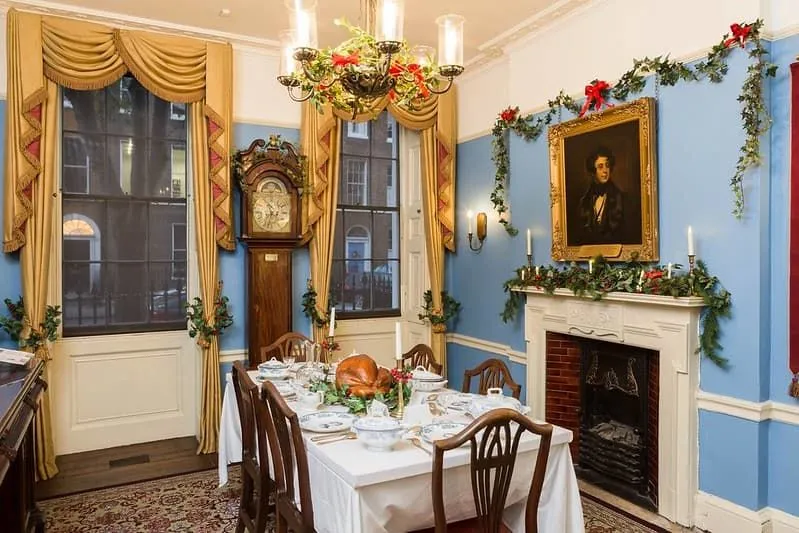FOR ALL AGES
The Victorian Era always makes for a fascinating history lesson. From their methods of crime and punishment to their school system, kids are always amazed by how many of our current ways of life come from this period in time.
And Christmas is a great example of that. With Christmas tree and cards, crackers and even the turkey dinner, children will love learning about where all their favourite Christmas Day traditions come from.
Although it seems like a long-standing tradition, Christmas wasn't really celebrated before the beginning of the 19th century. But by the end of the century, Christmas-fever had taken hold: it became the countries biggest annual celebration, and spawned the majority of the traditions we know and love today.
Although Charles Dickens is sometimes credited with inventing the traditional Victorian Christmas, that isn't the case. But his famous novel A Christmas Carol did play a part in its rise in popularity, and the spread of its new traditions. From the preparation and eating of the feast, the decorations and gift giving, carols and parlour games, the Victorians centred Christmas around family and the key themes found in A Christmas Carol - those of family, charity, goodwill, peace and happiness - completely encapsulate the spirit of the Victorian Christmas.
In 1843, Sir Henry Cole, famous civil servant and inventor, who is credited with the design of the world's very first postage stamp the Penny Black, commissioned an artist to design the first Christmas card. The illustration showed a group of people sat happily around a dinner table, with a Christmas message, and were originally sold for one shilling each. People instantly fell in love with the idea, but as a shilling was far too expensive for the average Victorian, many children (including Queen Victoria's!) decided to make their own Christmas card.
However as this was the heart of the Industrial Revolution, factories soon introduced more efficient colour printing technology and the price of card production dropped significantly. Combined with the introduction of the halfpenny postage rate, this meant that by the 1880s, sending a Christmas card had become affordable and hugely popular - 11.5 million cards were sold in 1880 alone.

Many historians attribute the development of our core Christmas traditions to Prince Albert, husband of Queen Victoria. German-born, he allegedly brought many of his favourite childhood traditions with him when he came to England.
In 1848, The Illustrated London News published a drawing of the royal family celebrating, all sat around a beautifully decorated Christmas tree, and soon every home in Britain had a similar tree, adorned with sweets, fruit and nuts, candles, homemade decorations and little gifts.
In 1848, inspired by a trip to Paris where he discovered 'bon bons' (sugared almonds wrapped in twirls of paper), British confectioner Tom Smith invented the first Christmas cracker: a simple package filled with sweets that snapped when pulled apart. As the era progresses, the sweets were replaced by mottos, love notes or jokes, small gifts and paper hats.
The tradition of using evergreen foliage in decorations has been around since Medieval times, but the Victorians decided to supercharge them. Instead of hanging simple sprigs on walls and windowsills, they developed a much more elegant and elaborate style and uniform, careful placement. In 1881 Cassell's Family Magazine stated: "To bring about a general feeling of enjoyment, much depends on the surroundings… It is worthwhile to bestow some little trouble on the decoration of the rooms".
Traditionally, people gave gifts at New Year, but with the surge in popularity and importance of Christmas, the tradition was moved. Like many Victorian Christmas traditions, presents began modest, for example, fruit, nuts, sweets and little handmade gifts that were hung up on the tree. But with factory production, and the idea of gift-giving becoming more and more important to the celebration, soon gifts were bigger, shop-bought and placed below the Christmas tree.
However, a poor child could only expect an apple, orange and a few nuts in a stocking.

Much like the evergreen foliage, the Christmas feast has its roots in the Middle Ages, but it's during the Victorian Era that it began to assume the form we recognise now.
Previously roast beef and goose were the centrepiece of the middle class Christmas Day dinner, with poor communities making do with rabbit. Initially, turkey was introduced by wealthier Victorians in the 19th century, but by the beginning of the 20th century, its size and reduction in cost meant that roast turkey became the traditional Christmas meal for most middle class families.
Mince pies are another tradition dating back to Tudor times, and even early Victorian recipes show that mince pies were still made from meat. But during the 19th century, meat-free mixes grew in popularity and became the fruity mince pies we know today.
Carols had been around for many years but had somewhat fallen out of fashion. The new tradition of Christmas saw the revival of carols, where old words were set to new tunes. The Victorians came to consider carols a must-have form of Christmas entertainment and the first major collection of carols was published in 1833.
Father Christmas, or Santa Claus, has many different influences. Father Christmas was originally part of an old English midwinter festival, and was dressed in green as a sign of the returning spring. St. Nicholas, or Sinter Klaas, came via Dutch settlers to America in the 17th Century and from the 1870s became known in Britain as Santa Claus. It was then in the Victorian era that his reindeer and sleigh for gift-giving became popularised.
Read The Disclaimer
At Kidadl we pride ourselves on offering families original ideas to make the most of time spent together at home or out and about, wherever you are in the world. We strive to recommend the very best things that are suggested by our community and are things we would do ourselves - our aim is to be the trusted friend to parents.
We try our very best, but cannot guarantee perfection. We will always aim to give you accurate information at the date of publication - however, information does change, so it’s important you do your own research, double-check and make the decision that is right for your family.
Kidadl provides inspiration to entertain and educate your children. We recognise that not all activities and ideas are appropriate and suitable for all children and families or in all circumstances. Our recommended activities are based on age but these are a guide. We recommend that these ideas are used as inspiration, that ideas are undertaken with appropriate adult supervision, and that each adult uses their own discretion and knowledge of their children to consider the safety and suitability.
Kidadl cannot accept liability for the execution of these ideas, and parental supervision is advised at all times, as safety is paramount. Anyone using the information provided by Kidadl does so at their own risk and we can not accept liability if things go wrong.
Kidadl is independent and to make our service free to you the reader we are supported by advertising.
We hope you love our recommendations for products and services! What we suggest is selected independently by the Kidadl team. If you purchase using the buy now button we may earn a small commission. This does not influence our choices. Please note: prices are correct and items are available at the time the article was published.
Kidadl has a number of affiliate partners that we work with including Amazon. Please note that Kidadl is a participant in the Amazon Services LLC Associates Program, an affiliate advertising program designed to provide a means for sites to earn advertising fees by advertising and linking to amazon.
We also link to other websites, but are not responsible for their content.
Was this article helpful?



Browse Category



We’ll send you tons of inspiration to help you find a hidden gem in your local area or plan a big day out.



Check your inbox for your latest news from us. You have subscribed to:
Remember that you can always manage your preferences or unsubscribe through the link at the foot of each newsletter.